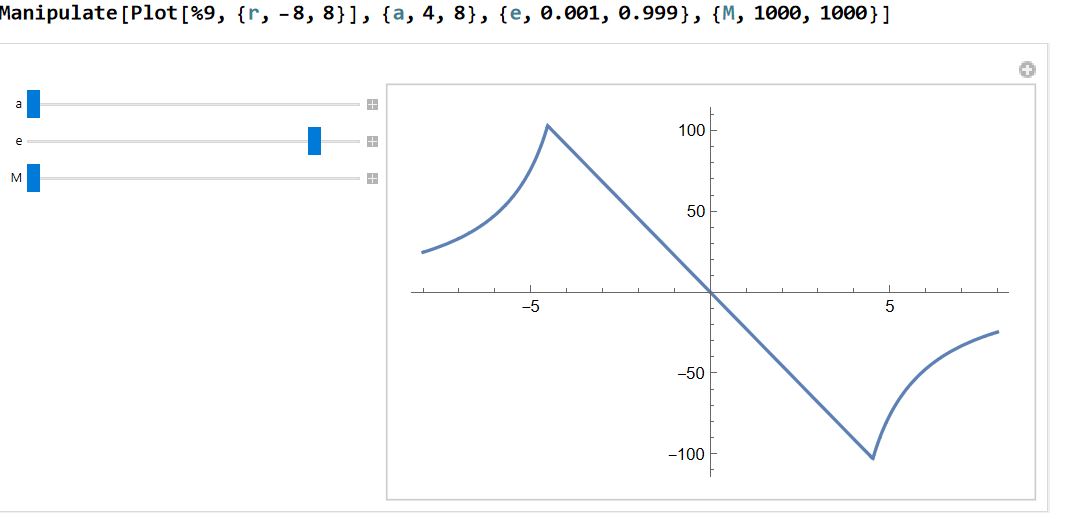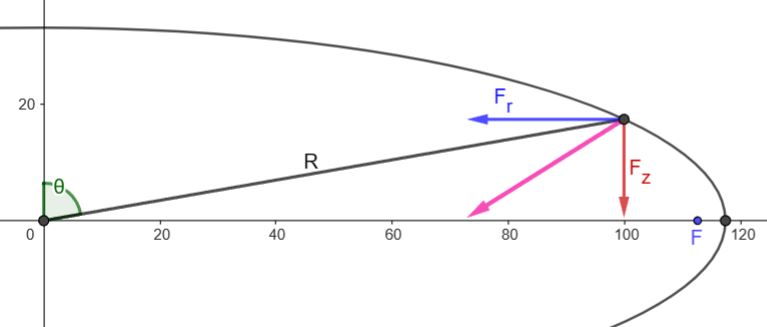The first step is to find the partial derivative of $$P = \frac{3 M}{(2 a e)} \left[B \left(1 - \frac{r^2}{(2 a^2 e^2)} + \frac{z^2}{(a^2 e^2}\right) + \frac{r^2}{(2 a^2 e^2)} \sin(B) \ \cos(B) - \frac{z^2}{(2 a^2 e^2)} \tan(B) \right] \ \ $$ with respect to r.
The result occupies several pages, so I will not post the result here, but it can be seen in this Mathematica worksheet.
The next step is to substitute the value of z (The vertical coordinate) as a function of r (the horizontal coordinate).
$$z(r) = \sqrt{(a^2 - a^2 e^2)*(1 - r^2/a^2)}$$
which is readily obtained from the definition of an ellipse.
We can now plot the horizontal gravitational force as a function of r:
In the above plot it can be seen that although the curve of $F_r$ is not trivial, it is in fact a straight line within the confines of $r<a$, i.e. within the radius of the oblate sphere.
A little experimentations shows that the straight line portion of the graph for $F_r$ is approximated fairly well by the following:
$$F_r = \frac{r}{a} \left( \frac{M}{a^2} \exp{(e^2)}^{\left(\frac{2 e^2}{3}\right)} + \frac{1}{\sqrt{1 - e^2}} \right)$$
The important thing to note is that everything in the equation is a constant except for r and the equation is proportional to $r M$ and not the expected $M/r^2$. It means the surface gravity vector of an oblate sphere that points towards the central axis increases as r gets larger!
Of course the above equation is an approximation, but it is not too difficult to show that for any value of a for the radius of the galaxy and any value of $e$ for the eccentricity of the galaxy, the $r M$ relationship always holds. For the picky, the exact equations are contsined in the Mathematica document linked above.
For completeness, the force component $F_z$ that acts down towards the disk parallel to the rotation z axis, can be approximated by:
$$F_r = \sqrt{a^2-r^2} \left(\frac{M}{a^3} (\exp{e^2})^{\left(\frac{9 e^2}{10}\right)} + \frac{1}{a \sqrt{1 - e^2}} \right)$$
With these two approximations we can readily plot the force vectors and visualise the resultant total force vector at the surface.


